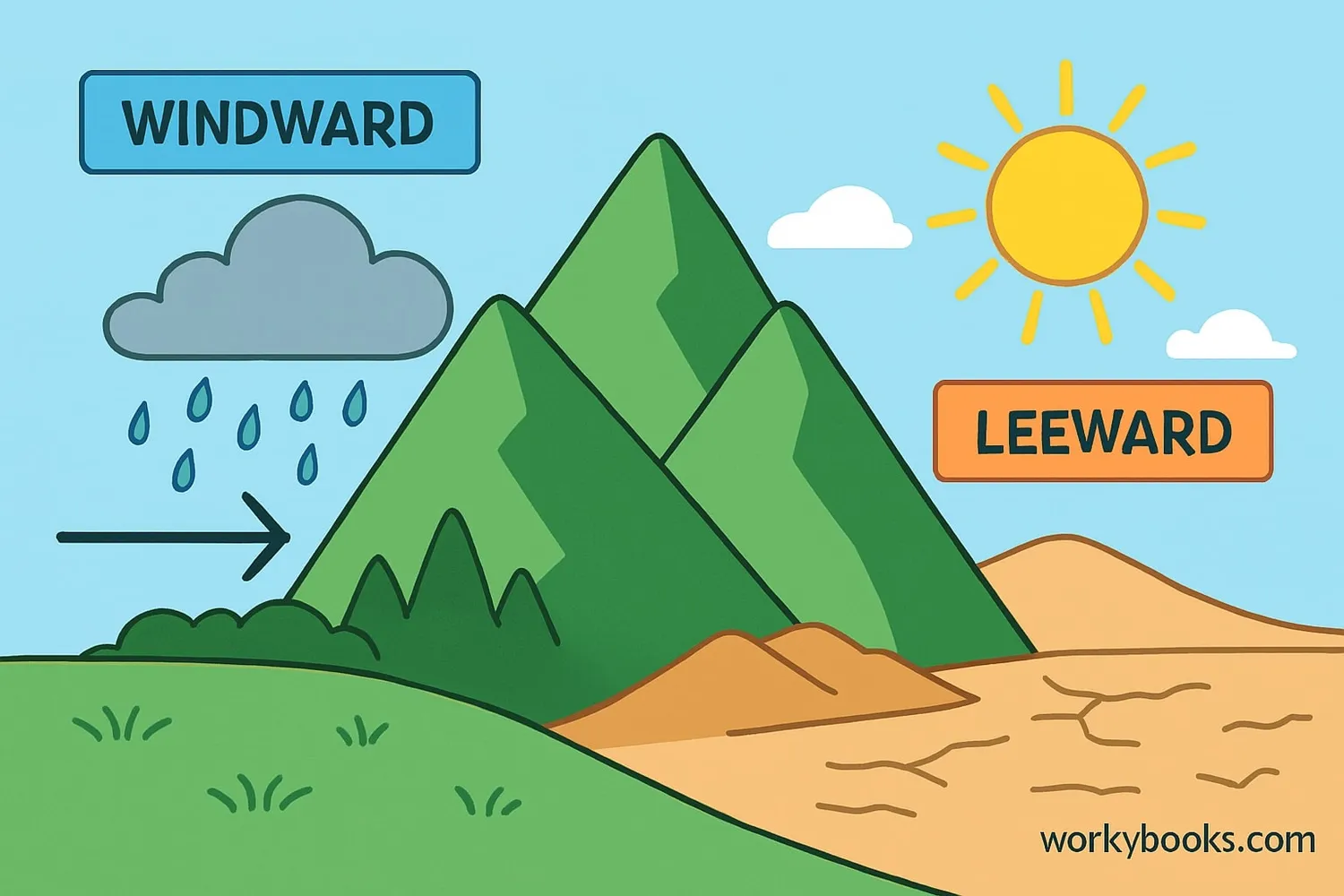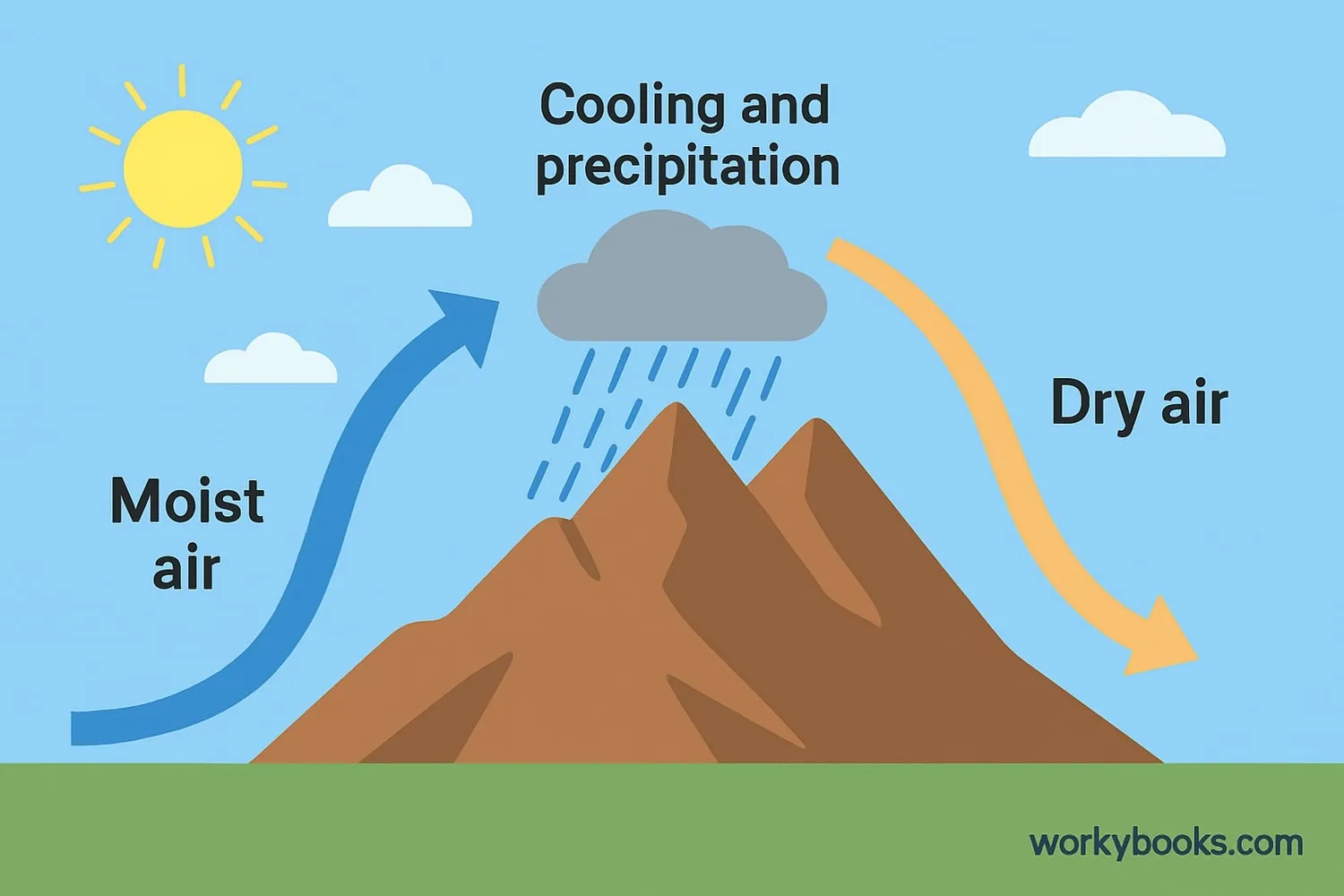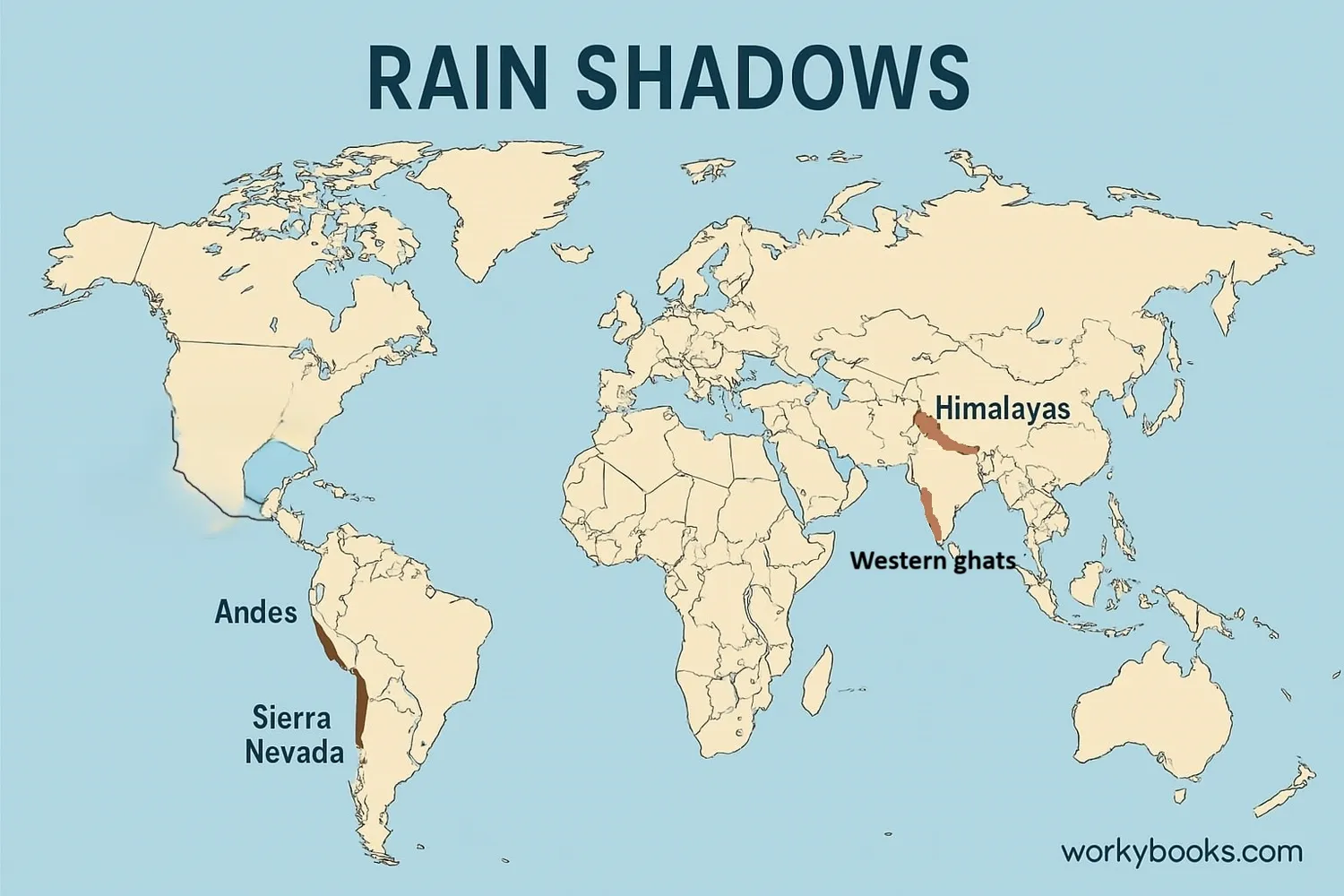Rain Shadow Effect - Definition, Examples, Quiz, FAQ, Trivia
Discover how mountains create dry areas on one side and wet areas on the other!
What is the Rain Shadow Effect?

The rain shadow effect is a natural phenomenon where one side of a mountain range gets plenty of rain, while the other side stays dry. It's like the mountain creates a "shadow" of dryness!
Think of mountains as giant barriers for clouds and moisture. When moist air from the ocean hits a mountain range, it's forced to rise. As it rises, it cools and forms clouds that produce rain or snow. By the time the air crosses over the mountains, it's dry and creates a desert-like area on the other side.
Key Terms
Windward side: The side of the mountain facing the wind that receives precipitation
Leeward side: The downwind side that becomes dry and arid
Orographic rainfall: Precipitation caused by air rising over mountains
How the Rain Shadow Effect Works

The rain shadow effect happens because of how air moves and changes temperature when it encounters mountains. Here's the step-by-step process:
Moist Air Approaches
Prevailing winds carry moist air from oceans toward land
Air Rises
The air is forced upward over mountain ranges
Cooling & Condensation
As air rises, it cools (adiabatic cooling) and water vapor condenses
Precipitation
Clouds form and release rain or snow (orographic rainfall)
Dry Air Descends
Dry air moves down the leeward side, warming as it descends
Rain Shadow Forms
The dry area behind the mountains receives little precipitation
This process creates dramatically different climate zones on either side of a mountain range. The windward side can be lush and green with forests, while the leeward side might be a desert or dry shrubland.
Foehn Winds
The warm, dry winds that blow down the leeward side of mountains are called Foehn winds. They can cause rapid snowmelt and sometimes create fire hazards.
Real-World Rain Shadow Examples

Rain shadows occur all around our planet. Here are some famous examples:
Himalayas
Creates the Gobi Desert on the leeward side
Western Ghats (India)
Leads to dry conditions in the Deccan Plateau
Sierra Nevada
Creates Death Valley - one of Earth's hottest, driest places
Andes Mountains
Forms the Atacama Desert - the driest non-polar desert
These examples show how mountains dramatically affect local climates. In Washington State, Sequim receives only 16 inches of rain annually thanks to the Olympic Mountains' rain shadow, while the windward side gets over 100 inches! This creates "blue holes" - areas of clear sky surrounded by clouds.
Rain Shadow Quiz
Test your knowledge about the rain shadow effect with this quiz! Answer all 5 questions to see how much you've learned.
Frequently Asked Questions
Here are answers to common questions about the rain shadow effect:
Fascinating Rain Shadow Facts
Discover some amazing facts about rain shadows around the world!
Driest Place on Earth
The Atacama Desert in Chile, in the rain shadow of the Andes, is the driest non-polar desert. Some areas haven't seen rain in over 400 years! Scientists study this extreme environment to understand life on Mars.
Washington's Sunny Secret
Sequim, Washington lies in the rain shadow of the Olympic Mountains and receives just 16 inches of rain annually - less than Dallas, Texas! This creates a "blue hole" of sunny weather that allows lavender farming.
Clever Plant Adaptations
Plants in rain shadow regions develop special adaptations like deep roots, waxy leaves, and water-storing tissues. The Great Basin's sagebrush has roots reaching 6 meters deep to find water in dry soil.
Ancient Climate Control
The Himalayas' rain shadow effect helped create the Gobi Desert, which influenced human migration patterns in Asia. Early civilizations developed irrigation techniques to farm in these dry regions.





